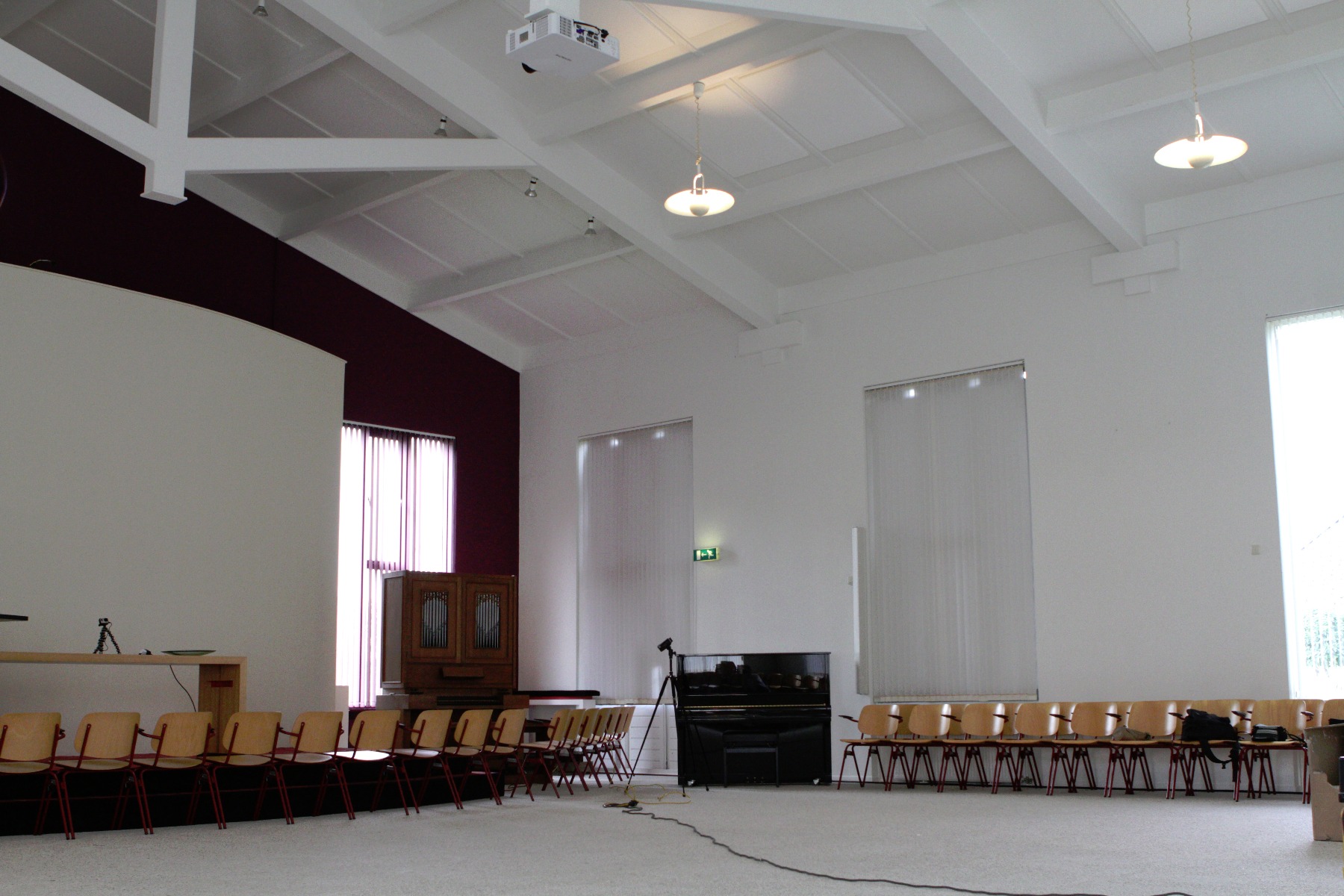A few months ago we deliverd acoustic materials to diminish the reverberation in a space which is known for its characteristic acoustics: a church. Improving the acoustics in this room depended on a lot of factors. We identified these factors, and will summarise them below.
The sound problem: the characteristic reverberation in churches
One of the few spaces that allows for a certain measure of reverberation, is a church or prayer room. Due to the well-balanced reverberation (and pace of speech), the voice of the pastor reaches far into the room. This principle was already known when the first cathedrals where built in the middle ages. Already back then, acoustics were taken into account. Qualitative church acoustics gives a full sound to vocals. This means that there is a measure of reverberation, but no echo. The difference between reverberation and echo, is that of a hollow and a double sound. Think, for example, of a tunnel. Too much reverberation diminishes the intelligibility in a room. People with bad hearing in particular suffer from this. This sound problem is a common complaint for church settings. When church buildings are repurposed, for example a transformation into a gathering room, the acoustics have to be addressed.

Finding the right solution in order to improve church acoustics
By installing sound absorbing materials, the reverberation in a room can be diminished. In order to determine the right amount of materials and the right location, we recommend identifying the types of complaints concerning the acoustics. You should be able to answer the following questions:
- Who is complaining? Is it the organ player, the choir, the pastor or the visitors of the church?
- What is the room used for the most (often)? Do you mainly want to improve on the intelligibility of the pastor or do you want the music to sound better? Is the room repurposed, like a transformation into an office or meeting room?
- Does the problem present itself with a full or empty church? An empty church will reverberate more than a full church.
- What is your budget? Maybe the budget is not sufficient to measure reverberation or to get onsite advice. This shouldn't always be a problem, but because of this it may be necessary to solve the sound problem in stages by constantly adding material and measuring the effect its placing has.
Rule of thumb: in case the acoustics are bad in a full room, you can safely assume that you still need to add an amount of absorption material equal to 50% of the floor space. So, if your room has a floor space of 100 m², you need to add 50 m² of absorption material, spread across the room. The ceiling and the wall opposite to the pulpit or stage are the spots where the primary sound reflection takes place. These are so-called 'reverberation hotspots'. Start by equipping these surfaces with sound absorption material.
In our range you will find various acoustic materials that are suitable to install in churches, like against the ceiling or walls. You can select flat acoustic plates, nicely shaped acoustic panels with pyramides, studs, or a facet edge, baffles or a combination of these products.

Practicle example: improved acoustics of the Kings Church in Langerak
In this practicle example flat, white Flamex Basic plates were selected for installation against the ceiling. The advantage of these plates is that they bearly stand out against the white ceiling. Attaching them was very easy thanks to the Stauf Extreme Tack adhesive paste. 70% of the ceiling was equipped with Flamex basic plates, each measuring 1200 x 1000 mm and having a thickness of 25 mm. These plates efficiently absorb sound, particularly in the middle and high frequency range. Things like coughing, talking, moving chairs and the ticking of high heels produce sounds with a frequency in this particular range.
If the sound problem only consists of flutter echo (a metal-like reverberation), but does the whole sound spectrum has a lasting reverberation? In this case, we recommend using products with a thickness of at least 40 mm. This thickness has, depending on the product, an average absorption value (absorption coefficient / αw) of about 0.65. Products containing this αw value are suitable for situations that require widely applicable solutions, such as in churches in which performances from choirs and music bands take place. If the problem remains, even when the church is full during these events, we recommend applying absorption materials with a thickness of 40 mm in an amount that equals 50 to 60% of the floor space.
Questions? 
Do you have questions concerning this topic or about the aforementioned materials? Please feel free to contact us.

 Sound Absorption
Sound Absorption  Sound Insulation
Sound Insulation  Vibration Isolation
Vibration Isolation  Silent Ventilation
Silent Ventilation  Accessories
Accessories  Thermal & Acoustic Insulation
Thermal & Acoustic Insulation